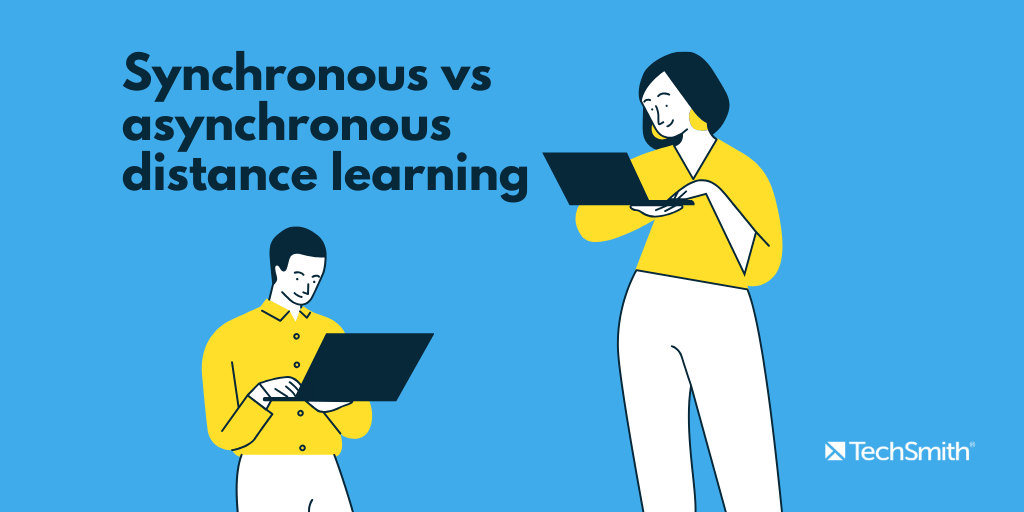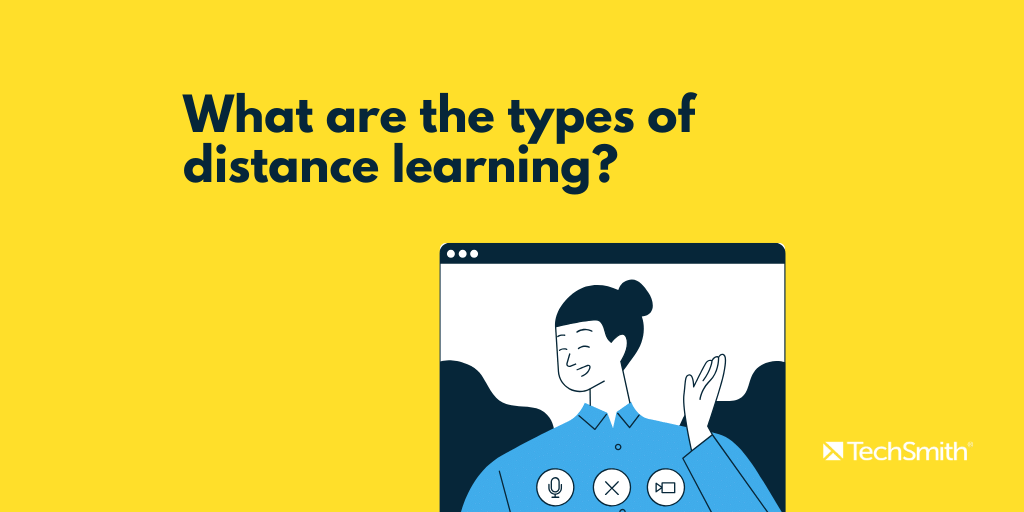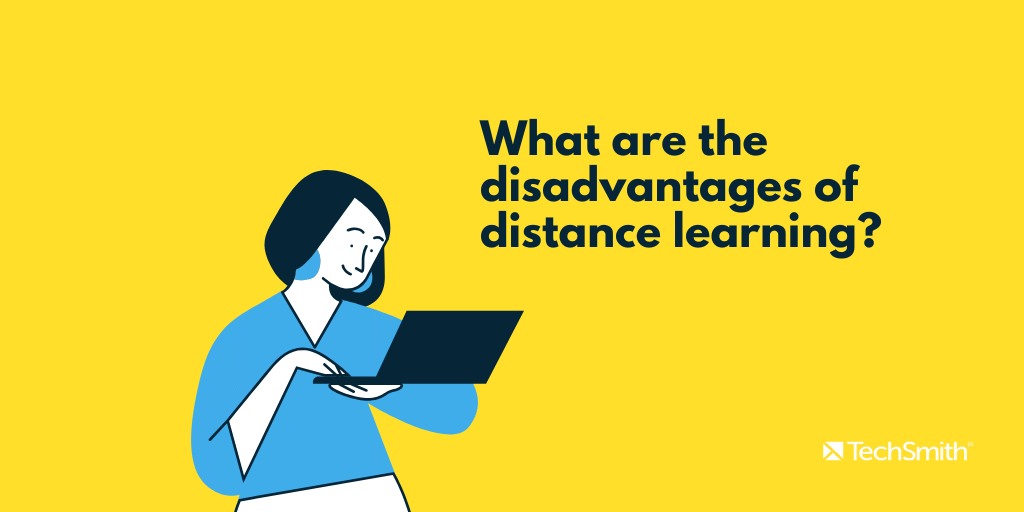
In this post, you’re going to learn everything you need to know about distance learning.
This guide includes tons of:
- Helpful definitions
- Answers to frequently asked questions
- Best practices
- And much more
So, if you want to learn more about how to effectively teach students from a distance in 2021, you’ll love the information in this guide.
Keep reading for our complete guide to distance learning.
Create Effective Course Videos [Checklist]
This checklist gives you the exact videos to include in every course so you can easily engage students online.
In 2017, 6.6 million students enrolled in distance learning. Due to the spread of COVID-19, that number has skyrocketed to over 400 million students..
Online learning from a distance has become a go-to method of education, especially as we all adjust to new circumstances presented by the COVID-19 pandemic.
“This is clearly an unprecedented time, and for universities, this may force online learning to become the new normal. Multiple studies suggest that most students are already confident that technology-enabled learning works, but this has probably been a difficult transition for some faculty members. I am hoping that universities and faculty members will embrace the challenge and adapt,” K. Holly Shiflett, director, North American partnerships, FutureLearn, said in a recent interview.
This is a truly transformative moment for many educators and students alike.
Unfortunately, it can be a challenge for many educators to find the time to create effective online courses.
That’s why we’re here to help!
What is distance learning?
Distance learning is a way of educating students online. Lectures and learning materials are sent over the internet. Students work from home, not in a classroom.

There are many excellent benefits of distance learning. For one, it proves less expensive to support. For another, distance learning is not limited by geography. For example, you don’t need to be in the United States to take classes at a university located in America.
Due to the coronavirus, distance learning — typically a style of teaching utilized by colleges and universities — is now being adopted by elementary and high school students as well. Entire school districts and campuses are being forced to create online-based learning opportunities and do it effectively.
This approach could disadvantage some students, though. Students with limited computer or internet access may struggle. And those who need extra help with motivation and organization may also struggle when they are removed from a traditional classroom environment.

Synchronous vs asynchronous distance learning
Distance learning falls into two main categories:
- Synchronous
- Asynchronous
You should understand what the difference between synchronous vs asynchronous is. Different types of distance learning fall into one or both of these camps.
Synchronous
Synchronous means “at the same time.” It refers to a method of education delivery that happens in real-time. It requires live communication online. It uses technology, such as teleconferencing, to achieve this.
Synchronous learning proves less flexible than other forms of distance learning. After all, students must meet with their instructor and sometimes their classmates at pre-scheduled times.
This approach limits the student’s ability to learn at their own pace. It may frustrate some learners who crave the freedom of the asynchronous classroom.
Asynchronous
As for asynchronous distance education? Students receive clusters of weekly deadlines. They have the freedom to work at their own speed.
Asynchronous distance learning comes with more opportunities for student interaction.
Students can access course content beyond the scheduled meeting or class time and interact through online conversations, quizzes, or video comments on their own schedule.
Both faculty and students benefit from the flexibility of asynchronous learning as it allows them to create and consume content when it’s convenient for them.
Benefits of asynchronous learning
In today’s world, both professors and students realize that external factors contribute to odd hours and disjointed schedules.
The flexibility of asynchronous learning allows them to create and consume content when it’s convenient for them and learning materials can be accessed at any time, anywhere.
Reach and engagement
With hectic and unpredictable schedules, faculty can extend course content beyond the scheduled meeting and class time through pre-recorded videos and other content.
Faculty can leverage live recordings or create videos, and then get analytics, generate captions, have conversations, add quizzes, and integrate content right into an LMS.
Student motivation
Asynchronous teaching methods help motivate students to review content on their own time and on whatever device they prefer.
Students can go at their own pace and when it’s convenient for them. Self-paced learning accommodates various learning needs and preferences and enhances student success.
Students can refer then back to the content to study for exams, have discussions, and consult the content beyond.
Complement synchronous learning experience
There’s always a need for virtual, live interaction, but asynchronous communication complements that to extend live sessions beyond a singular class.
For example, rather than simply having a Zoom meeting, professors can do a lot more with a recording. They can:
- Post the Zoom recording for rewatching
- Interact around the content
- Get analytics on participation
- Generate captions for accessibility
- Add quizzes
- Integrate with an LMS
A tool like TechSmith Camtasia will you save steps and help create better content for online courses.

What are the types of distance learning?
Next, let’s explore various types of distance learning. These approaches to education can be synchronous or asynchronous. Some fall into both categories.
These types of distance learning include:
- Video conferencing
- Hybrid distance education
- Open schedule online courses
- Fixed-time online courses
Let’s dive into what each of these types of distance learning entails.
Video conferencing
Video conferencing is traditionally a meeting where two or more participants use video to connect over the internet. This is a form of synchronous communication. Using tools like Zoom, Blackboard Collaborate, Adobe Connect, or other conferencing software, teachers and students interact together no matter where they are located.
Video conferencing enhances student-instructor interactions and provides a structure for lesson planning. It remains a vital component of distance learning.
Hybrid distance education
Hybrid distance education combines synchronous and asynchronous methods. Students receive deadlines to complete assignments and exams. Then, they work at their own pace.
They submit assignments through online forums. They maintain contact with their instructor. Yet, they work at their own pace. As students progress, they gain access to new modules.
Who thrives with hybrid distance education? Students that love independence.
Open schedule online courses
Under the asynchronous category, you’ll find open schedule online instruction. Such courses provide students with plenty of freedom. To complete coursework, students receive:
- Online textbook(s)
- Bulletin boards
- And more
Students are given a set of deadlines. Then, the instructor sets them free to work at their own pace. Students who value learning independently excel with this format. It requires significant self-discipline and motivation, though.
Students who lack the right skill set may find this approach daunting. They may feel overwhelmed by the presentation of material. They may lack the motivation to work through the course in an effective way.
Fixed-time online courses
What’s the most common format for distance learning? Fixed-time online courses.
How do they work? Students log-in to the learning site at designated times. They must complete pre-scheduled classroom activities at a specific pace.
These activities often include chats and discussion forums. Fixed time online courses encourage student interaction. But there’s little room for self-pacing.

What are the benefits of distance learning?
There are many distance learning benefits. They vary by synchronous or asynchronous course structures, though.
The advantages include:
- Self-inspiration
- Flexibility to choose
- Adaptability and freedom
- Easy access
- Earning while learning
- Money and time savings
- Virtual trips
- Communication with other educational institutions
Let’s take a look at these benefits. We’ll explore why they make distance learning a compelling option.
Self-inspiration
Motivated students excel in distancing learning classes. It encourages students to stay self-disciplined.
Students take on greater personal responsibility. They must stay well-organized. They must perform well in an online setting.
Flexibility to choose
Distance learning courses also come with flexibility. This varies by course structure, though. For many courses, students set their schedules. They take classes in their preferred location.
Adaptability and freedom
Instructors can tailor distance learning to suit students’ diverse educational needs. And it provides students with the freedom to learn anywhere, at their own pace. It remains an adaptable learning form.
Easy access
Attending traditional classes is impossible for some. Work and home life responsibilities can get in the way. Distance learning provides easy access to education. Students need a computer and an internet connection.
Earning while learning
For those working full-time jobs, continuing education was once out of the picture. Today, though, they can hone and update their professional skills.
Distance learning provides the flexibility to do so in the evening and on weekends. Schooling no longer has to come before a career.
Money and time savings
Distance learning also saves money and time. Students (and instructors) don’t have to worry about travel time to and from campus. They don’t have expenses related to gas, car maintenance, or parking, either. Single parents can avoid childcare costs and still have a valuable learning experience.
Distance learning courses often provide learning materials online. So, students can nix textbooks costs from the mix, too. These costs alone can save learners hundreds of dollars per semester.
Virtual trips
Distance learning allows students to take virtual trips. These “trips” let students experience places related to the curriculum. Students can learn in interactive ways through these experiences.
Virtual trips are an exciting way to engage students, and are interactive tools many instructors rely on to increase engagement.

How does distance learning work?
There are different types of distance learning available. Nonetheless, instructors send all information to students over the internet.
This information may come in the form of:
- Online textbooks
- Screen-recorded videos using tools like Snagit and Camtasia
- Voice-over slideshow presentations
- Scheduled chats between students and the instructor
A typical distance learning course
What does a typical distance learning course look like? In many higher education institutions, distance learning courses are the same length as face-to-face ones — eight weeks or an entire semester long.
The instructor will:
- Set the theme for each week
- Provide topics for discussion
- Post assignments with detailed instructions.
- Record lectures, short videos, or presentations
Then, students spend the week:
- Watching lectures, videos, or presentations
- Researching discussion topics
- Submitting discussion posts
- Submitting assignments
- Participating in video conferencing
- Corresponding with the instructor via email
- And more
Interested in learning more about how to engage students through distance learning? Check out this helpful resource.
Does distance learning have value?
Absolutely. While distance learning was once considered an inferior substitute for traditional education, it is now considered by many to be outperforming traditional classroom instruction.
This is largely because of video and technology. Video helps make distance learning feel personable and helps keep students engaged.
Not only are students more successful, but they prefer remote learning.
77% of academic leaders rate online education as equal or superior. And 69% of chief academic officers agree.
Distance learning is a vital part of long-term education strategies.

What are the disadvantages of distance learning?
The benefits of distance learning are clear, but there are some warnings when it comes to this learning approach, too.
Let’s consider some of the disadvantages. For one, students face a higher risk of online distraction. Without face-to-face meetings, students can lose track of deadlines and motivation.
Students who work well on their own may easily surmount these obstacles. Students who have trouble prioritizing may stumble. So will those who lack organizational and scheduling skills.
Distance learning comes with hidden student costs, too. These expenses include:
- Gaining access to a reliable computer
- Having an internet connection
- Buying a web camera (in some instances)
- Computer maintenance
- Utilities (e.g., electricity for internet services)
Not all students have access to these resources. Distance learning can put them at a distinct disadvantage.
A slow internet connection will hamper a student’s ability to participate online. They may lack the bandwidth to watch videos or teleconference.
Are distance learning degrees recognized?
In recent years, distance learning has gained in popularity. In fall 2017, 3.1 million higher education students enrolled in online programs. And there is a rising proportion of students studying fully online who are enrolled within 50 miles of their home.
Distance learning has gained widespread credibility and acceptance, too. Top online universities are comparable to their on-campus counterparts.
Nonetheless, students should still keep an eye out for scammers. Before choosing a distance learning program, they should explore the institution’s accreditation.
What does accreditation look like? While it may vary, accreditation occurs at three levels:
- Programmatic accreditation
- Regional accreditation
- National accreditation
Programmatic accreditation attests to the validity of certain programs of study. Regional accreditation means regional agencies have endorsed specific fields of study.
National accreditation means the program meets federal accreditation requirements.
Why use distance learning?
It comes with countless advantages, from greater flexibility to time and money saved. When online learning is interactive and engaging, students can excel. This is why many instructors are adding it to their instruction playbook.
Interested in bringing the most innovative distance learning resources to your students? Or, do you need help with how to prepare for distance learning? We’ve got you covered.

Best practices for building online courses
Professors don’t have to feel like they’re starting from scratch. Here are our top tips to create better online courses for your students.
1. Create a welcome video
Invite your students to create a welcome video, too, and post them in a discussion board to start building connections.
2. Make an introductory video for your course
This usually covers an overview of the syllabus, course layout in the LMS, assignments and grading policy, contact information, important dates, and possibly a walkthrough of a specific learning module.
3. Provide weekly updates and reminders
Create a screen recording with webcam to check in and walk through where you currently are in the course syllabus. Point out what assignments are due, and answer any questions from students.
4. Bring in guest speakers and experts
Use synchronous live chats that bring in field experts to share their experiences and answer questions.
5. Give meaningful feedback
It can be difficult to provide feedback when you can’t be face-to-face with students. Use Snagit to insert brief comments and highlight specific areas or record a video for more detailed spoken feedback.
6. Let students lead the discussion
As you build online courses try to make the discussions more meaningful and engaging. One tip is to allow students a chance to moderate or lead a discussion board instead of only participate. This will help prevent the typical “wait until the last day and post something” tendency that students can have.
7. Participate in learning
The best thing you can do for your students is to participate and support them in the learning process, even from a distance. Stay active in discussion boards, ask questions, and comment on individual posts by students.

The future of distance learning
Most professors aren’t confident they can make online learning as effective as their face-to-face courses.
But if you’re cramming traditional teaching methods into your online courses, your students’ success (and your evaluations) will suffer.
We want you to be successful teaching online. And engaging your students with video is the best way to do that.
We understand that teaching online can be intimidating. And we’ve helped thousands of professors across the country easily create video content for more effective courses.
Camtasia helps you create simple, accessible videos so your lessons are engaging and students are more successful.
You don’t have to learn complicated video creation tools or workflows. Camtasia makes it easy, fast, and effective.
Whether you need to create a welcome video, record a presentation, or capture an entire lecture, Camtasia makes it simple to engage your students with video.
[“source=techsmith”]





